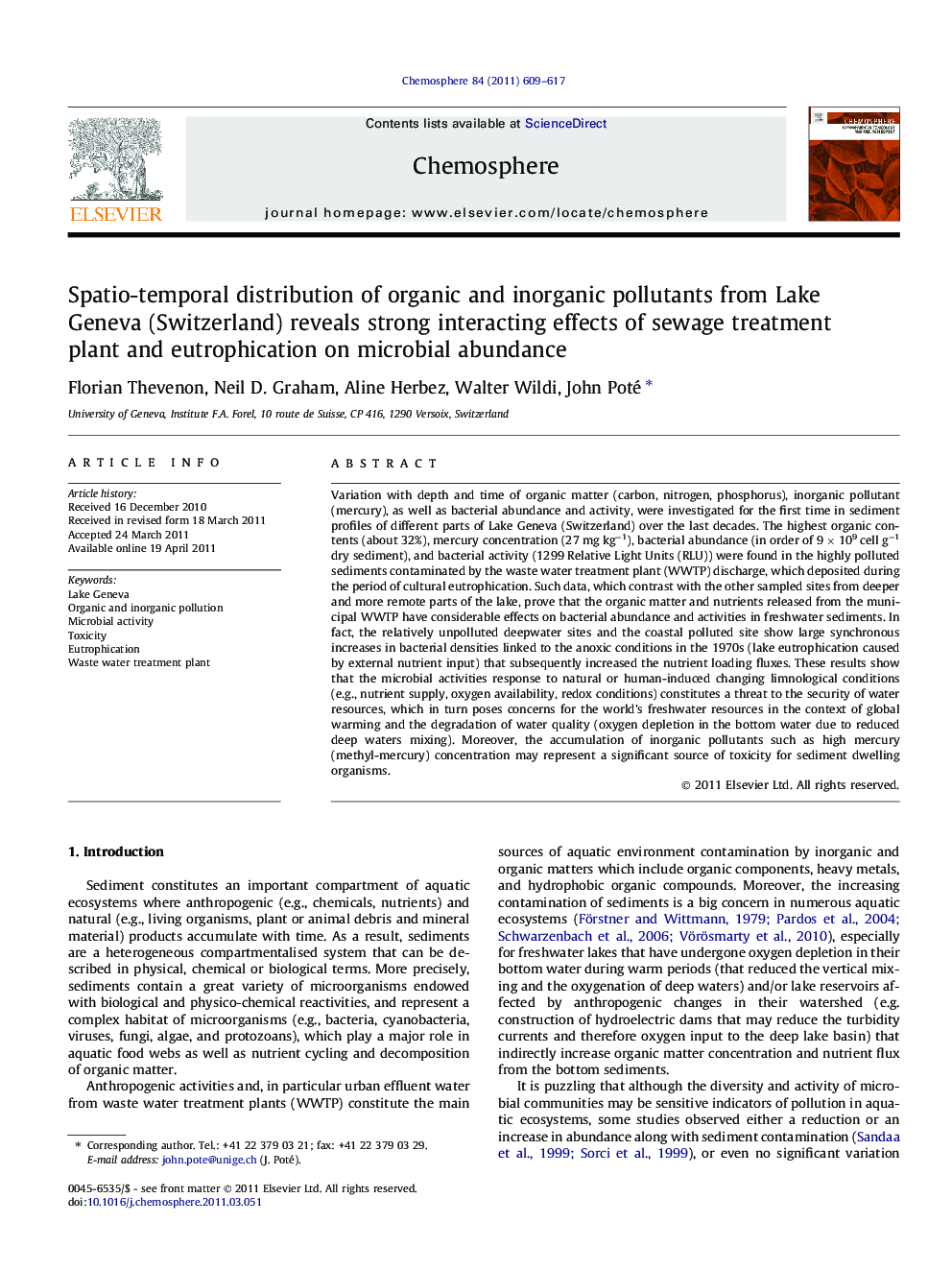| Article ID | Journal | Published Year | Pages | File Type |
|---|---|---|---|---|
| 4410613 | Chemosphere | 2011 | 9 Pages |
Variation with depth and time of organic matter (carbon, nitrogen, phosphorus), inorganic pollutant (mercury), as well as bacterial abundance and activity, were investigated for the first time in sediment profiles of different parts of Lake Geneva (Switzerland) over the last decades. The highest organic contents (about 32%), mercury concentration (27 mg kg−1), bacterial abundance (in order of 9 × 109 cell g−1 dry sediment), and bacterial activity (1299 Relative Light Units (RLU)) were found in the highly polluted sediments contaminated by the waste water treatment plant (WWTP) discharge, which deposited during the period of cultural eutrophication. Such data, which contrast with the other sampled sites from deeper and more remote parts of the lake, prove that the organic matter and nutrients released from the municipal WWTP have considerable effects on bacterial abundance and activities in freshwater sediments. In fact, the relatively unpolluted deepwater sites and the coastal polluted site show large synchronous increases in bacterial densities linked to the anoxic conditions in the 1970s (lake eutrophication caused by external nutrient input) that subsequently increased the nutrient loading fluxes. These results show that the microbial activities response to natural or human-induced changing limnological conditions (e.g., nutrient supply, oxygen availability, redox conditions) constitutes a threat to the security of water resources, which in turn poses concerns for the world’s freshwater resources in the context of global warming and the degradation of water quality (oxygen depletion in the bottom water due to reduced deep waters mixing). Moreover, the accumulation of inorganic pollutants such as high mercury (methyl-mercury) concentration may represent a significant source of toxicity for sediment dwelling organisms.
► We present contrasted sedimentary records of Hg, OM, and microbial activities from Lake Geneva. ► The highest organic and inorganic pollutants were found in the Bay of Vidy. ► The OM released from the WWTP has considerable effect on the bacterial abundance and activities. ► The accumulation of heavy metal may represent a source of toxicity for sediment dwelling organisms.
